
Petra Lexová: On the Importance of "Context" and "Dialogue" in Architecture
Source
Petra Lexová pro kulturní měsíčník SemTam
Petra Lexová pro kulturní měsíčník SemTam
Publisher
Petr Šmídek
01.10.2013 13:40
Petr Šmídek
01.10.2013 13:40
Miroslav Šik
Quality of housing, the context of buildings and their environment, as well as the relationship between old and new. These are the themes that architect Miroslav Šik deals with in his work. The exhibition And now ANSAMBL!!! aims to present a collective challenge to architects, builders, and authorities to view urban design and architecture as a collective, evolving, and dialogue-based work of art and to act accordingly. In the spaces of the Czech Budějovice House of Art gallery, a corresponding visual statement will be presented in the form of large-format prints.
The exhibition previously appeared at the 13th International Architecture Biennale in Venice in 2012, where Miroslav Šik was invited to represent Switzerland. For the Gallery of Contemporary Art and Architecture House of Art, he presents an original project in a modified form tailored specifically to the given spaces.
Miroslav Šik (*1953) is an architect of Czech origin, the son of Czech reform economist Ota Šik, who emigrated to Switzerland with his family in 1968. He studied architecture at ETH Zurich under Aldo Rossi and Mario Campi. After completing his studies, he remained at the school as an assistant to Prof. Fabio Reinhart and researched Swiss architecture during World War II. In the late 1980s, he formulated the theory of so-called Analogical Architecture, which brought him worldwide recognition. In the early 1990s, he briefly worked at the FA ČVUT in Prague, where he influenced a generation of young Czech architects, such as Michal Kuzemský, Jan Šepka, David Kraus, and Marek Chalupa. In 1998, he obtained a professorship at ETH Zurich, where he continues to work as a professor of architecture. He engages in architecture not only from a theoretical perspective. In 1988, he founded an architectural studio in Zurich, which has completed a number of successful projects. Selected works include the Catholic parish center St. Antonius in Egg (2002), a special education school with all-day care in Zurich (2003), and several residential buildings in Winterthur (2005), Haldenstein (2007), and Zug (2012).
The ideological core of Šik's work lies in the understanding of "context," as described in his theory of Analogical Architecture (Analoge Architektur, published in Czech in 1990). He perceives it as a fundamental point from which a building should originate and around which the architect should engage. This is not a political or cultural context, but purely an urban one, in which the architect strives to achieve smooth communication between the original and new buildings. Whether dealing with historical buildings or distinct regional architecture, the process of "growing together" with the new building is essential, so that the final aesthetic effect of the given place is seamless. He criticizes the antagonism typical of capitalist urban development.
In the article At a Second Glance (ERA 21, 2011), Šik also presents the state of contemporary cities. On one hand, he paints a picture of cities where numerous original buildings are emerging, which may initially evoke a sense of chaos. In contrast, he sets the monotony that "bores" with its harmoniousness and unbrokenness. He sees the solution in a revolutionary effort for transformation through integration.
“It is precisely between these two poles, between gradual addition and the composed form of the city, between solitary buildings and urban unity, that a reformative tendency must be established. The term ‘ensemble’, which has become popular for such shaping, best expresses the ‘here-and-there’ process of design. The new interprets the existing environment, introduces a strong spatial figure, or captures the atmosphere, allowing the new to give the heterogeneous and multi-layered environment the ability to engage in dialogue.”
Miroslav Šik regularly appears in the Czech Republic, yet he is uncompromisingly critical of domestic architecture. In contrast to Swiss rational simplicity, he places Czech efforts at complexity (in the spirit of boastful originality). However, this lacks an important foundation: a connection to context. Values such as solidity and durability are often overshadowed by a desire for experimentation, and the adoption of foreign models often occurs without regard for the specific character of the place. However, the form of Czech architecture is not the main issue that Šik wants to highlight. In his work, he also deals with a number of problems of contemporary housing that are the same both here and abroad. He sees the problem in the nature of modern cities, where family housing has been pushed from the center to the periphery. “This ‘flight to nature’ and the daily influx of commuters increases agglomeration, burdens traffic, and noise, devastates the quality of housing in urban neighborhoods, and massively consumes everything that remains of the still little-affected nature.”
Šik sees the solution in the so-called “little big city,” a mixture of metropolis and town, city and landscape, a centrally located urban core, and adjacent regional centers.
There are more problems like this. However, the possibilities for solutions often stem from a long dialogue between architects, sponsors, and ordinary citizens of the cities. The importance lies in the willingness to initiate a dialogue itself. This is often lacking on one side or the other here. One opportunity is offered to us by the exhibition And now ANSAMBL!!! and the preceding lecture by Miroslav Šik.
The lecture by Miroslav Šik will take place at 4:30 PM at the Horká vana café in České Budějovice. The exhibition opening will be held at 6 PM in the gallery space of the House of Art.
The article by Petra Lexová was created for the October issue of the cultural monthly magazine SemTam.
The exhibition previously appeared at the 13th International Architecture Biennale in Venice in 2012, where Miroslav Šik was invited to represent Switzerland. For the Gallery of Contemporary Art and Architecture House of Art, he presents an original project in a modified form tailored specifically to the given spaces.
Miroslav Šik (*1953) is an architect of Czech origin, the son of Czech reform economist Ota Šik, who emigrated to Switzerland with his family in 1968. He studied architecture at ETH Zurich under Aldo Rossi and Mario Campi. After completing his studies, he remained at the school as an assistant to Prof. Fabio Reinhart and researched Swiss architecture during World War II. In the late 1980s, he formulated the theory of so-called Analogical Architecture, which brought him worldwide recognition. In the early 1990s, he briefly worked at the FA ČVUT in Prague, where he influenced a generation of young Czech architects, such as Michal Kuzemský, Jan Šepka, David Kraus, and Marek Chalupa. In 1998, he obtained a professorship at ETH Zurich, where he continues to work as a professor of architecture. He engages in architecture not only from a theoretical perspective. In 1988, he founded an architectural studio in Zurich, which has completed a number of successful projects. Selected works include the Catholic parish center St. Antonius in Egg (2002), a special education school with all-day care in Zurich (2003), and several residential buildings in Winterthur (2005), Haldenstein (2007), and Zug (2012).
The ideological core of Šik's work lies in the understanding of "context," as described in his theory of Analogical Architecture (Analoge Architektur, published in Czech in 1990). He perceives it as a fundamental point from which a building should originate and around which the architect should engage. This is not a political or cultural context, but purely an urban one, in which the architect strives to achieve smooth communication between the original and new buildings. Whether dealing with historical buildings or distinct regional architecture, the process of "growing together" with the new building is essential, so that the final aesthetic effect of the given place is seamless. He criticizes the antagonism typical of capitalist urban development.
In the article At a Second Glance (ERA 21, 2011), Šik also presents the state of contemporary cities. On one hand, he paints a picture of cities where numerous original buildings are emerging, which may initially evoke a sense of chaos. In contrast, he sets the monotony that "bores" with its harmoniousness and unbrokenness. He sees the solution in a revolutionary effort for transformation through integration.
“It is precisely between these two poles, between gradual addition and the composed form of the city, between solitary buildings and urban unity, that a reformative tendency must be established. The term ‘ensemble’, which has become popular for such shaping, best expresses the ‘here-and-there’ process of design. The new interprets the existing environment, introduces a strong spatial figure, or captures the atmosphere, allowing the new to give the heterogeneous and multi-layered environment the ability to engage in dialogue.”
Miroslav Šik regularly appears in the Czech Republic, yet he is uncompromisingly critical of domestic architecture. In contrast to Swiss rational simplicity, he places Czech efforts at complexity (in the spirit of boastful originality). However, this lacks an important foundation: a connection to context. Values such as solidity and durability are often overshadowed by a desire for experimentation, and the adoption of foreign models often occurs without regard for the specific character of the place. However, the form of Czech architecture is not the main issue that Šik wants to highlight. In his work, he also deals with a number of problems of contemporary housing that are the same both here and abroad. He sees the problem in the nature of modern cities, where family housing has been pushed from the center to the periphery. “This ‘flight to nature’ and the daily influx of commuters increases agglomeration, burdens traffic, and noise, devastates the quality of housing in urban neighborhoods, and massively consumes everything that remains of the still little-affected nature.”
Šik sees the solution in the so-called “little big city,” a mixture of metropolis and town, city and landscape, a centrally located urban core, and adjacent regional centers.
There are more problems like this. However, the possibilities for solutions often stem from a long dialogue between architects, sponsors, and ordinary citizens of the cities. The importance lies in the willingness to initiate a dialogue itself. This is often lacking on one side or the other here. One opportunity is offered to us by the exhibition And now ANSAMBL!!! and the preceding lecture by Miroslav Šik.
The lecture by Miroslav Šik will take place at 4:30 PM at the Horká vana café in České Budějovice. The exhibition opening will be held at 6 PM in the gallery space of the House of Art.
The article by Petra Lexová was created for the October issue of the cultural monthly magazine SemTam.
The English translation is powered by AI tool. Switch to Czech to view the original text source.
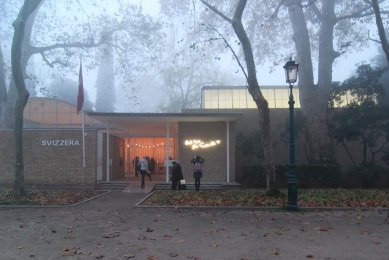

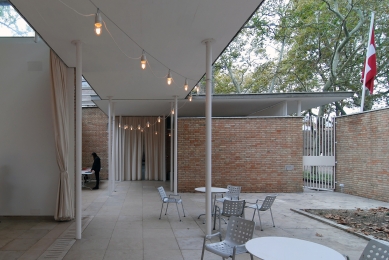
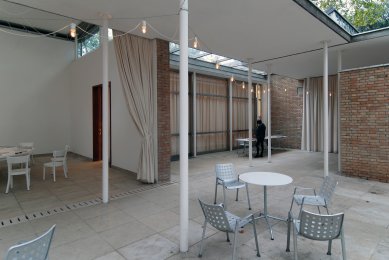
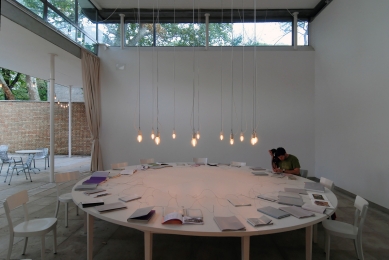
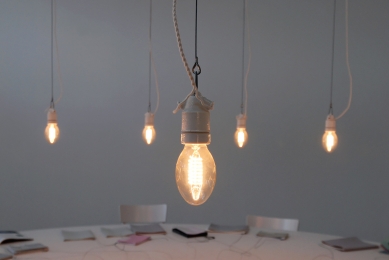
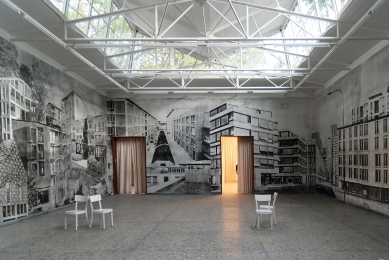
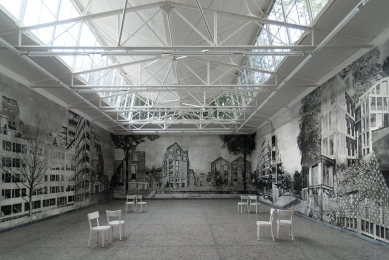
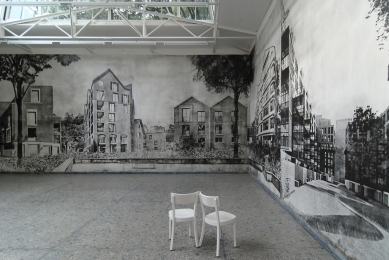
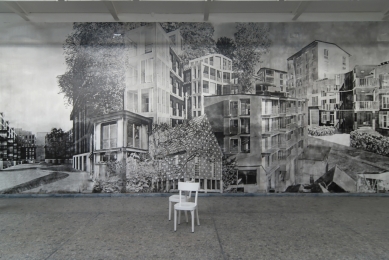
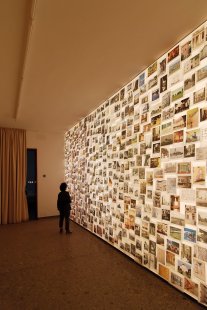

0 comments
add comment












